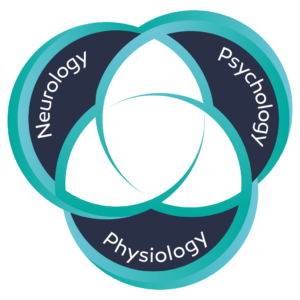Did you know your brain is wired to focus on the negative? This isn’t just a personality quirk—it’s a survival mechanism deeply rooted in human evolution. While it helped our ancestors avoid predators and other dangers, in today’s world, it can work against us—especially if you’re dealing with chronic pain.
Let’s explore the concept of negativity bias and how it can perpetuate an overstimulated nervous system, keeping you stuck in a cycle of pain and discomfort.
What is Negativity Bias?
Negativity bias is the tendency of your brain to prioritize and dwell on negative experiences over positive ones. This bias evolved to keep us safe—a brain that focuses on potential threats is better equipped to survive in a dangerous environment.
For example, imagine a prehistoric human walking through the forest. Noticing a rustling bush could mean the difference between life and death if it’s a predator. This hyper awareness of danger allowed our ancestors to stay vigilant and avoid harm. However, in today’s world, where threats are rarely life-threatening, this survival mechanism often goes into overdrive.
How Negativity Bias Fuels Chronic Pain
When your brain is constantly scanning for danger, your nervous system remains on high alert. This creates a feedback loop of stress and pain:
1. **Perceived Danger:** Negativity bias keeps your brain focused on anything it perceives as a threat, whether it’s physical discomfort, emotional stress, or an external situation.
2. **Stress Response:** Your nervous system reacts by releasing stress chemicals like cortisol and adrenaline.
3. **Increased Sensitivity:** These chemicals heighten your sensitivity to pain and discomfort, amplifying your experience of chronic pain.
4. **Reinforcement:** The pain and stress confirm your brain’s belief that something is wrong, keeping the cycle going.
Over time, this loop can become deeply ingrained, making it difficult to break free from the cycle of chronic pain.
Breaking Free from Negativity Bias
The good news is that your brain is adaptable. Through a concept called neuroplasticity, you can retrain your brain to focus on safety, calm, and positivity. Here are a few strategies to get started:
1. **Practice Gratitude:** Regularly write down three things you’re grateful for. This simple exercise helps shift your brain’s focus from threats to positive experiences.
2. **Mindful Awareness:** Notice when your thoughts drift toward the negative and gently redirect them. Techniques like meditation and deep breathing can help.
3. **Reframe Challenges:** Instead of viewing difficulties as insurmountable problems, see them as opportunities to grow and learn.
4. **Create Cues of Safety:** Surround yourself with reminders that you’re safe, whether it’s a calming environment, supportive relationships, or a comforting routine.
From Survival to Healing
Negativity bias served its purpose in helping humans survive, but it’s not serving you now. By understanding how this bias affects your nervous system, you can start to shift your brain’s focus from survival to healing. Over time, this shift can reduce chronic pain and improve your overall quality of life.
What Comes Next?
In the next blog post, we’ll dive into the concept of trauma and how it impacts your nervous system—not just the big, obvious traumas, but the small, subtle ones that often go unnoticed. These “little t” traumas can play a significant role in chronic pain and nervous system dysfunction.
Remember, healing is a journey, and every small step you take matters. Start by noticing your brain’s patterns and practicing simple techniques to cultivate positivity and calm.
If you’re ready to learn more about breaking the cycle of chronic pain, check out our free resources:





